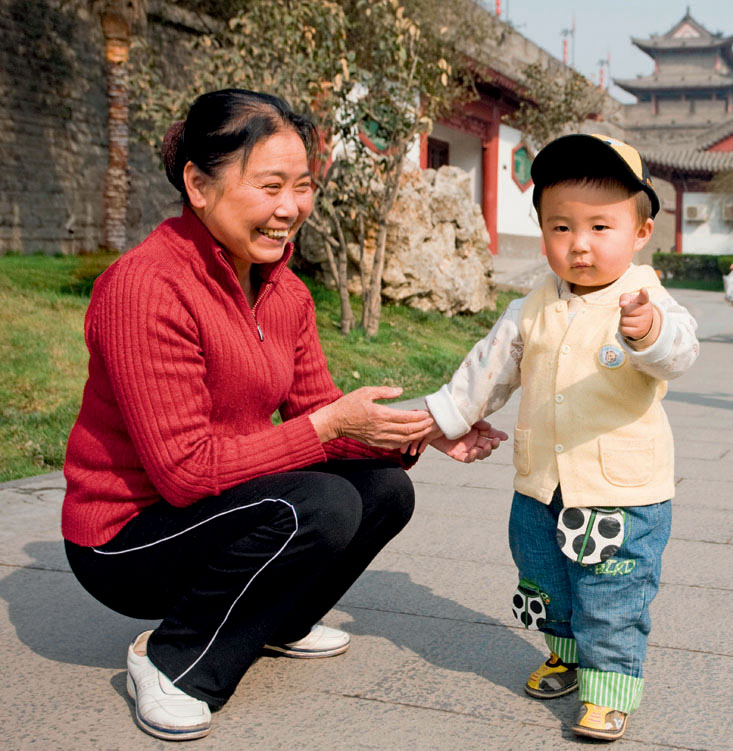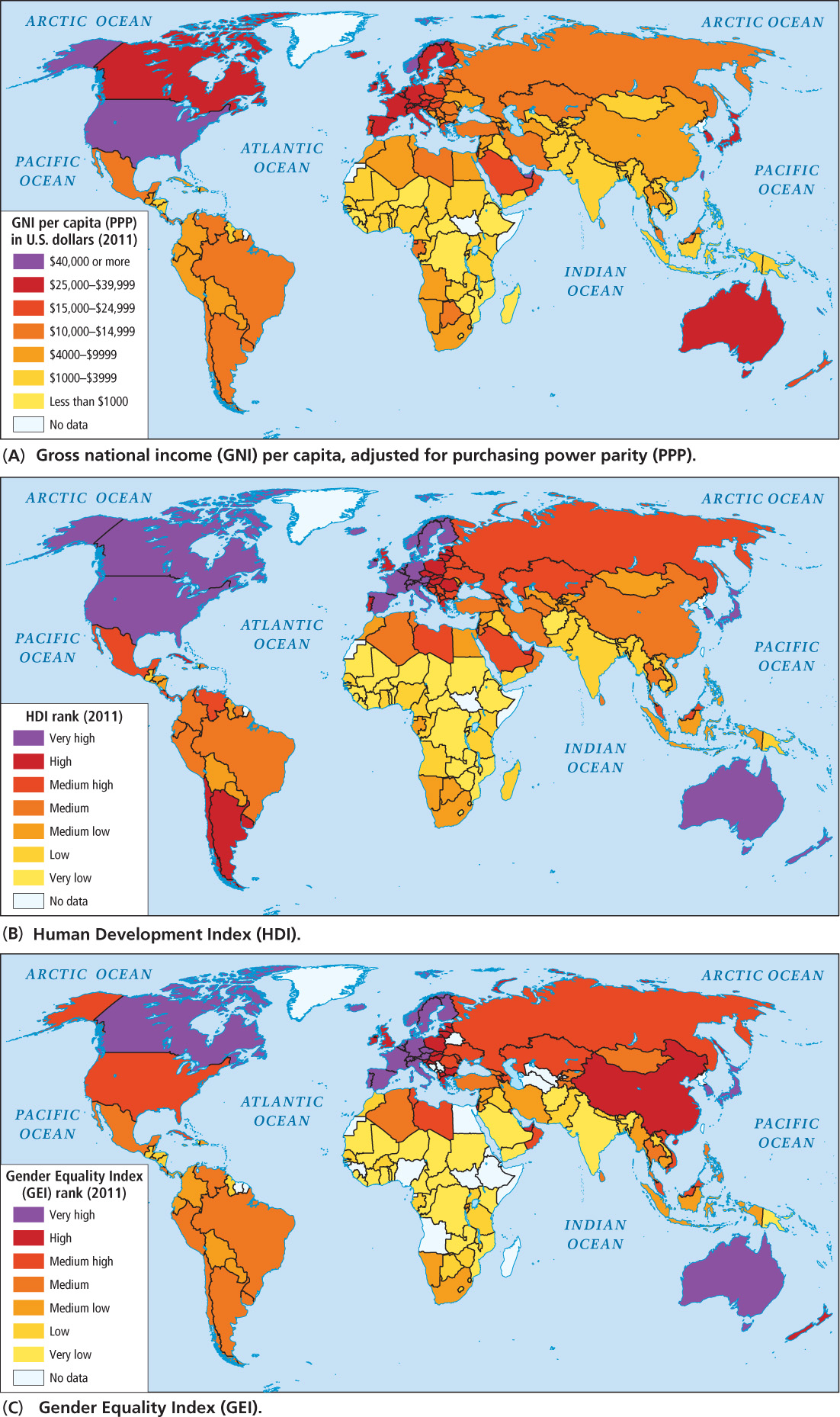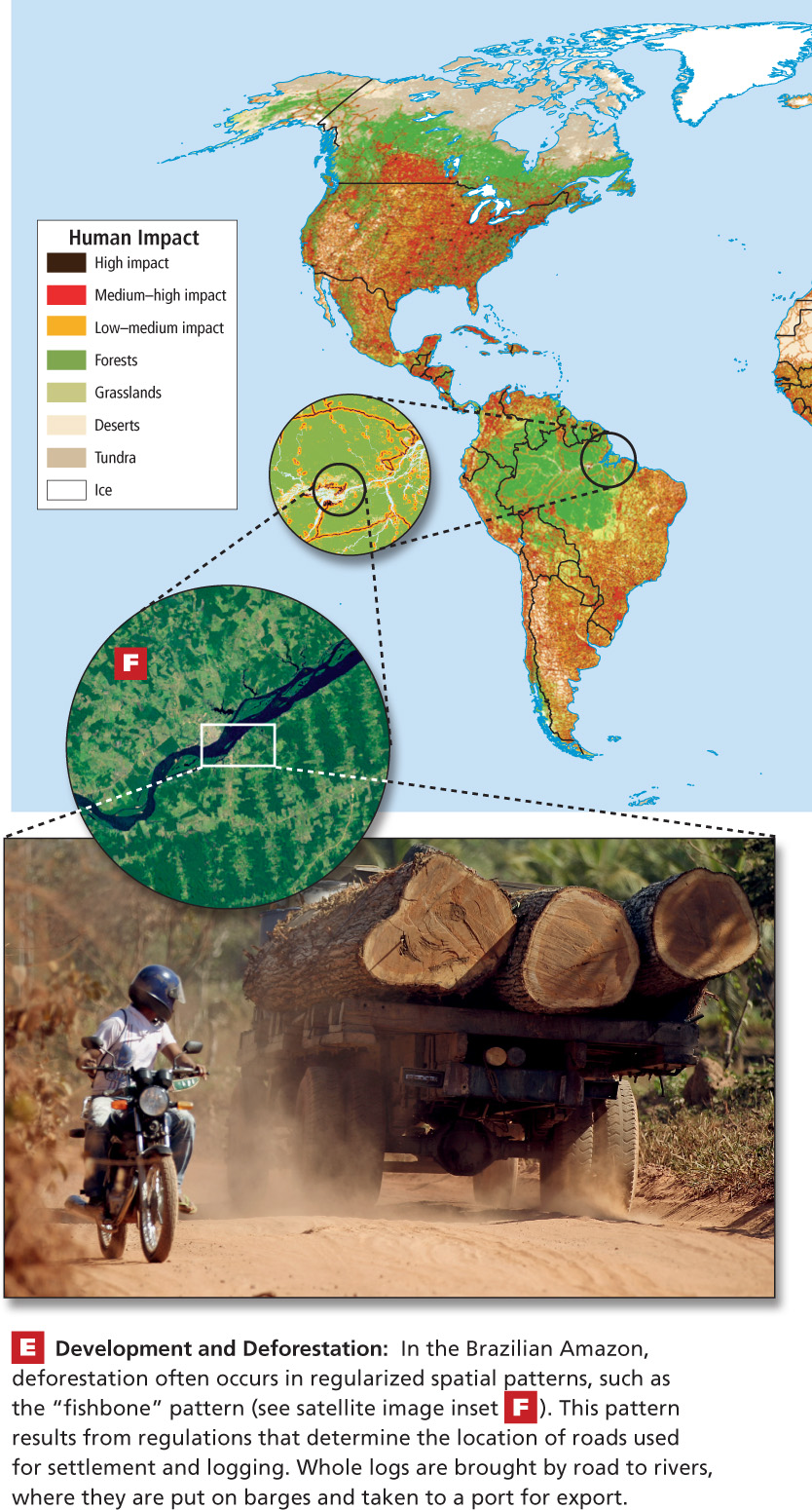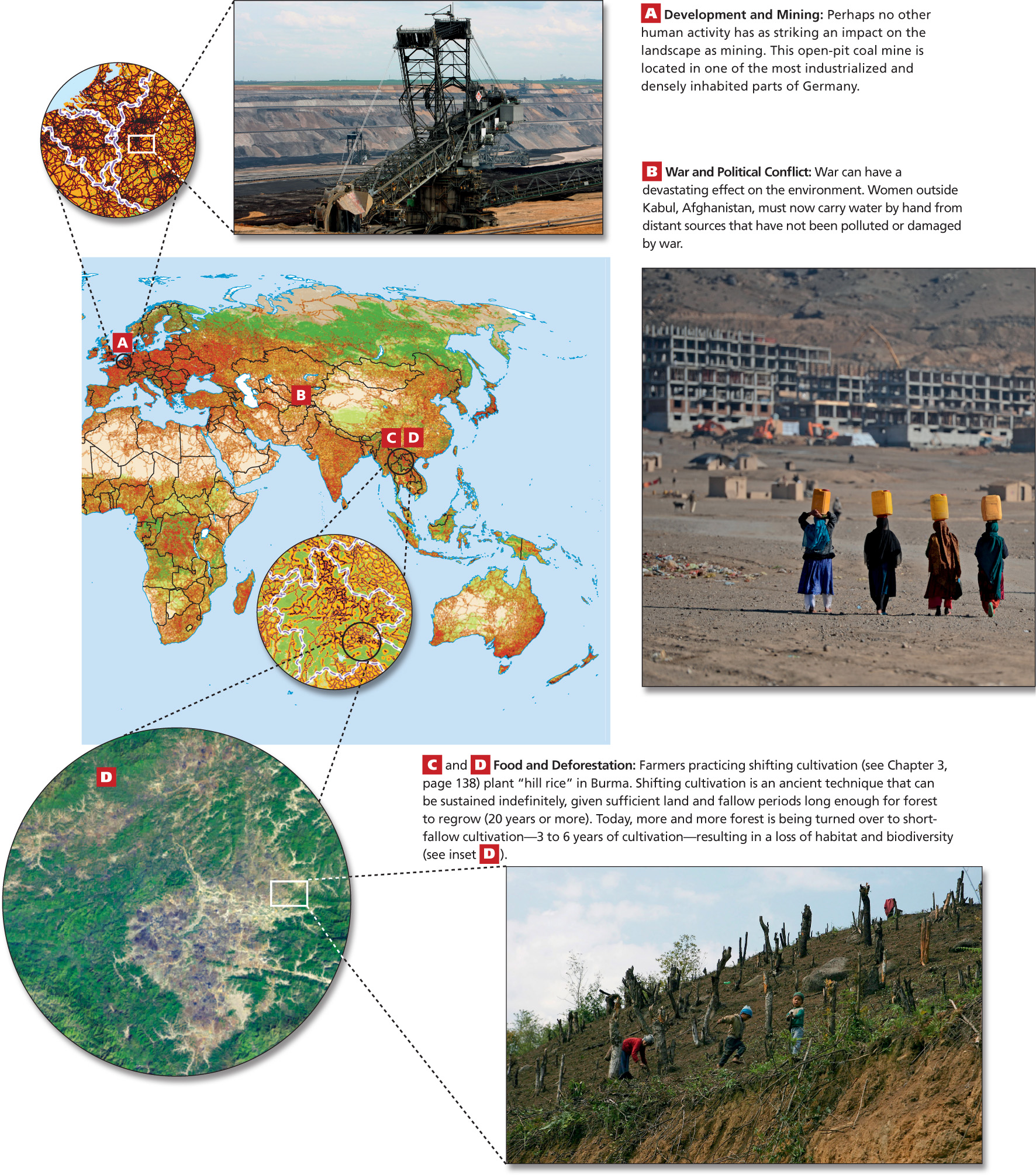1.3 Gender and Development
gender the ways a particular social group defines the differences between the sexes
sex the biological category of male or female; does not indicate how males or females may behave or identify themselves
For women, the historical and modern global gender picture is puzzlingly negative. In nearly every culture, in every region of the world, and for a great deal of recorded history, women have had (and still have) an inferior status. Exceptions are rare, although the intensity of this second-class designation varies considerably. On average, females have less access to education, medical care, and even food. They start work at a younger age and work longer hours than males. Around the world, people of both sexes still routinely accept the idea that males are more productive and intelligent than females. The puzzling question of how and why women became subordinate to men has not yet been well explored because, oddly enough, few thought the question significant until the last 50 years.
In nearly all cultures, families prefer boys over girls because, as adults, boys will have greater earning capacity (Table 1.1) and more power in society. This preference for boys has some unexpected side effects. For example, the preference may lead to fewer girls being born; eventually there will be a shortage of marriageable women, leaving many men without the hope of forming a family. Currently, there is concern in several Asian societies that the scarcity of young women could lead to antisocial behavior on the part of discouraged young men.  6. WOMEN STILL LAG BEHIND MEN IN TOP BOARDROOM JOBS
6. WOMEN STILL LAG BEHIND MEN IN TOP BOARDROOM JOBS
| Country | HDI rank | Female income (PPP U.S.$) | Male income (PPP U.S.$) | Female income as percent of male income |
|---|---|---|---|---|
| Austria | 19 | 22,528 | 55,934 | 40 |
| Barbados | 47 | 15,119 | 23,507 | 64 |
| Botswana | 118 | 8823 | 17,952 | 49 |
| Canada | 6 | 30,005 | 45,763 | 66 |
| Japan | 12 | 20,572 | 44,892 | 46 |
| Jordan | 95 | 2456 | 8581 | 29 |
| Kuwait | 63 | 24,531 | 65,010 | 38 |
| Poland | 39 | 13,886 | 24,292 | 57 |
| Russia | 66 | 15,191 | 23,284 | 65 |
| Saudi Arabia | 56 | 7157 | 36,727 | 19 |
| Sweden | 10 | 32,990 | 41,830 | 79 |
| United Kingdom | 28 | 28,354 | 42,217 | 67 |
| United States | 4 | 35,346 | 56,918 | 62 |
| Sources: Income data from “Estimated earned income,” The Global Gender Gap Report 2011 (Geneva: World Economic Forum), 44, table D3, http://reports.weforum.org/global-gender-gap-2011. | ||||
| HDI data from United Nations Human Development Report 2011, 128, table 1, at http://hdr.undp.org/en/reports/global/hdr2011/40 | ||||
Gender Roles
Geographic Insight 3
Population and Gender: The shift toward greater gender equality is having an influence on population growth patterns, patterns of economic development, and the distribution of power within families, communities, and countries.
gender roles the socially assigned roles for males and females
There are some striking consistencies regarding traditional gender roles around the globe, and over time. Men are expected to fulfill public roles, while women fulfill private roles. Certainly there are exceptions in every culture, and customs are changing, especially in wealthier countries. But generally, men work outside the home in positions such as executives, animal herders, hunters, farmers, warriors, or government leaders. Women keep house, bear and rear children, care for the elderly, grow and preserve food, and prepare the meals, among many other tasks. In nearly all cultures, women are defined as dependent on men—their fathers, husbands, brothers, or adult sons—even when the women may produce most of the family sustenance.
Gender Issues
Because their activities are focused on the home, women tend to marry early. One quarter of the girls in developing countries are mothers before they are 18. This is crucial in that pregnancy is the leading cause of death among girls 15 to 19 worldwide, primarily because immature female bodies are not ready for the stress of pregnancy and birth. Globally, babies born to women under 18 have a 60 percent greater chance of dying in infancy than do those born to women over 18.
Typically, women also have less access to education than men (globally, 70 percent of youth who leave school early are girls). They are less likely to have access to information and paid employment, and so have less access to wealth and political power. When they do work outside the home (as is the case increasingly in every world region), women tend to fill lower-paid positions, such as laborers, service workers, or lower-level professionals. And even when they work outside the home, most women retain their household duties, so they work a double day.
Gender and sex categories can be confusing in matters such as the extent to which physical differences between males and females may affect their social roles. On average, males and females are equally strong and durable, but women’s physical capabilities are somewhat limited during pregnancy and nursing. However, from the age of about 45, women are no longer subject to the limits of pregnancy, and most contribute in some significant way to the well-being of their adult children and grandchildren, an important social role. A growing number of biologists suggest that the evolutionary advantage of menopause in midlife is that it gives women the time and energy and freedom to help succeeding generations thrive. This notion—sometimes labeled the grandmother hypothesis—seems to have worldwide validity (Figure 1.11). Certainly, grandfathers can play nurturing roles, but they tend to not be involved in intimate care; and women tend to live 5 years longer than men.

Thinking Geographically
What are five things grandmothers in every world region are likely to worry about, regarding their grandchildren?
Perhaps more than for any other culturally defined human characteristic, significant agreement exists that gender is important, but just how gender roles are defined varies greatly across places and over time.
Traditional notions of gender roles are now being challenged everywhere. In many countries, including conservative Muslim countries, females are acquiring education at higher rates than males. Although it will take females a while to catch up, eventually, acquiring education should make women competitive with men for jobs and roles in public life as policy makers and government officials, not just as voters. Unless discrimination persists, women should also begin to earn pay equal to that of men (Table 1.1). Research data suggest that there is a ripple effect that benefits the whole group when developing countries pay attention to the needs of girls:
- Girls in developing countries, who get 7 or more years of education, marry 4 years later than average and have 2.2 fewer children.
- An extra year of secondary schooling over the average for her locale boosts a girl’s lifetime income by 15 to 25 percent.
- The children of educated mothers are healthier and more likely to finish secondary school.
- When women and girls earn income, 90 percent of their earnings are invested in the family, compared to just 40 percent of males’ earnings.
Considering only women’s perspectives on gender, however, misses half the story. Men are also affected by strict gender expectations, often negatively. For most of human history, young men have borne a disproportionate share of burdensome physical tasks and dangerous undertakings. Until recently, mostly young men left home to migrate to distant, low-paying jobs. Overwhelmingly, it has been young men (the majority of soldiers) who die in wars or suffer physical and psychological injuries from combat.
This book will return repeatedly to the question of gender disparities because they play such a central role in the potential for a brighter future in every country on Earth.
THINGS TO REMEMBER
 Gender—the sexual category of a person—is both a biological and a cultural phenomenon. Gender indicates how a particular group defines the social differences between the sexes. Sex is the biological category of male or female.
Gender—the sexual category of a person—is both a biological and a cultural phenomenon. Gender indicates how a particular group defines the social differences between the sexes. Sex is the biological category of male or female. There are some global consistencies in gender disparities: typically, males have public roles and females have private roles; in every country, the average woman earns less than the average man.
There are some global consistencies in gender disparities: typically, males have public roles and females have private roles; in every country, the average woman earns less than the average man.
 Geographic Insight 3Gender and Population Generally, as modernization takes hold, there is a move toward greater equality between the sexes. This shift is influencing population growth rates because women, presented with opportunities, choose to have fewer children.
Geographic Insight 3Gender and Population Generally, as modernization takes hold, there is a move toward greater equality between the sexes. This shift is influencing population growth rates because women, presented with opportunities, choose to have fewer children.
1.3.1 Development
primary sector an economic sector of the economy that is based on extraction (see also extraction)
extraction mining, forestry, and agriculture
secondary sector an economic sector of the economy that is based on industrial production (see also industrial production)
industrial production processing, manufacturing, and construction
tertiary sector an economic sector of the economy that is based on services (see also services)
services sales, entertainment, and financial services
quaternary sector a sector of the economy that is based on intellectual pursuits such as education, research and IT (information technology) development
development a term usually used to describe economic changes such as the greater productivity of agriculture and industry that lead to better standards of living or simply to increased mass consumption
The development process has several facets, one of which is a shift from economies based on extractive resources to those based on human resources. In many parts of the world, especially in poorer societies (often referred to as “underdeveloped” or “developing”), there are now shifts away from labor-intensive and low-wage, often agricultural, economies toward higher-wage but still labor-intensive manufacturing and service economies (including Internet-based economies). Meanwhile, the richest countries (often labeled “developed”) are lessening their dependence on labor-intensive manufacturing and shifting toward more highly skilled mechanized production or knowledge-based service and technology (quaternary) industries. As these changes occur, societies must provide adequate education, health care, and other social services to help their people contribute to economic development.
Measuring Economic Development
gross domestic product (GDP) per capita the total market value of all goods and services produced within a particular country’s borders and within a given year, divided by the number of people in the country
Using GNI per capita as a measure of how well people are living has several disadvantages. First is the matter of wealth distribution. Because GNI per capita is an average, it can hide the fact that a country has a few fabulously rich people and a great mass of abjectly poor people. For example, a GNI per capita of U.S.$50,000 would be meaningless if a few lived on millions per year and most lived on less than $10,000 per year.
purchasing power parity (PPP) the amount that the local currency equivalent of U.S.$1 will purchase in a given country
Euro zone those countries in the European Union that use the Euro currency
formal economy all aspects of the economy that take place in official channels
informal economy all aspects of the economy that take place outside official channels
There is a gender aspect to informal economies. Researchers studying all types of societies and cultures have shown that, on average, women perform about 60 percent of all the work done, and that much of this work is unpaid and in the informal economy. Yet only the work women are paid for in the formal economy appears in the statistics, so economic figures per capita ignore much of the work women do. Statistics also neglect the contributions of millions of men and children who work in the informal economy as subsistence farmers, traders, service people, or seasonal laborers.
A fourth disadvantage of GDP PPP or GNI PPP per capita is that neither takes into consideration whether these levels of income are achieved at the expense of environmental sustainability, human well-being, or human rights.
Geographic Patterns of Human Well-Being
human well-being various measures of the extent to which people are able to obtain a a healthy and socially rewarding standard of living in an environment that is safe and sustainable
Global GNI per capita PPP is mapped in Figure 1.12A. Comparisons between regions and countries are possible, but as discussed above, GNI per capita figures ignore all aspects of development other than economic ones. For example, there is no way to tell from GNI per capita figures how quickly a country is consuming its natural resources, or how well it is educating its young, maintaining its environment, or seeking gender and racial equality. Therefore, along with the traditional GNI per capita figure, geographers increasingly use several other measures of development.

United Nations Human Development Index (HDI) index that calculates a country’s level of well-being, based on a formula of factors that considers income adjusted to PPP, data on life expectancy at birth, and data on educational attainment
United Nations Gender Equality Index (GEI) a composite measure reflecting the degree to which there is inequality in achievements between women and men in three dimensions: reproductive health, political and educational empowerment, and labor-force participation. A high rank indicates that the genders are tending toward equality.
The third measure of well-being used here, the United Nations Gender Equality Index (GEI) is a composite measure reflecting the degree to which there is inequality in achievements between women and men in three dimensions: reproductive health, empowerment, and the labor market. A high rank indicates that the genders are tending toward equality. Ranks are from most equal (1) to least equal (146) (see Figure 1.12C).
Together, these three measures reveal some of the subtleties and nuances of well-being and make comparisons between countries somewhat more valid. Because the more sensitive indices (HDI and GEI) are also more complex than the purely economic GNI PPP per capita, they are all still being refined by the United Nations.
A geographer looking at these maps might make the following observations:
- The map of GNI per capita figures (see Figure 1.12A) shows a wide range of difference across the globe with very obvious concentrations of high and low GNI per capita. The most populous parts of the world—China and India—rank medium-low and low, respectively, but sub-Saharan Africa ranks the lowest.
- The HDI rank map (see Figure 1.12B) shows a similar pattern, but look closely. Middle and South America, Southeast Asia, China, Italy, and Spain rank a bit higher on HDI than they do on GNI; several countries in southern Africa, as well as Iran, rank lower on HDI than on GNI, thus illustrating the disconnect between GNI per capita and human well-being.
- The map of GEI rank (see Figure 1.12C) shows some strange anomalies, with certain high-income countries, such as the United States (47) and Qatar (111) ranking far lower on this index than on HDI. Meanwhile, China (35), which once had a reputation for gender discrimination and has a medium-low GNI, ranks 12 points higher than the United States on the GEI scale, in the same category with New Zealand (32) and Ireland (33).
Sustainable Development and Political Ecology
sustainable development the effort to improve present standards of living in ways that will not jeopardize those of future generations
political ecologists geographers who study the interactions among development, politics, human well-being, and the environment
Political ecologists are raising awareness that development should be measured by the improvements brought to overall human well-being and long-term environmental quality, not just by the income created. By these standards, converting forests to oil palm plantations might appear less attractive, since only a few will benefit at the cost of widespread and often irreversible ecological and social disruption.
Human Impact on the Biosphere
Anthropocene a geologic epoch during which humans have had an overwhelming impact on Earth‘s biosphere
biosphere the entirety of the Earth’s integrated physical spheres, with humans and other impacts included as part of nature
ecological footprint the amount of biologically productive land and sea area needed to sustain a person at the current average standard of living for a given population
Because the biosphere is a global ecological system that integrates all living things and their relationships, it is important to raise awareness that actions in widely separated parts of Earth have a cumulative effect on the whole. Figure 1.13 shows a global map of the relative intensity of human biosphere impacts. The map includes photo insets that show particular trouble spots in South America (Figure 1.13E, F), Europe (Figure 1.13A), South Asia (Figure 1.13B), and Southeast Asia (Figure 1.13C, D).
1.13a Courtesy Patrik Stollarz/AFP/Getty Images, 1.13b Courtesy Massoud Hossaini/AFP/Getty Images, 1.13c Courtesy China Photos/Getty Images, 1.13d & 1.13f Courtesy NASA, 1.13e Courtesy Mario Tama/Getty Images


Thinking Geographically
After you have read about human impacts on the biosphere, you will be able to answer the following questions:

Question
(Photo A) In what sector of the economy is mining?
A. B. C. D. 
Question
(Photo B) What form of pollution does this photo show most directly?
A. B. C. D. 
 ,
, 
Question
(Photos C-D) What is the evidence that shifting cultivation may be contributing to deforestation in the region depicted?
A. B. C. D. 
 ,
, 
Question
(Photos E-F) How is logging in Brazil linked to rising CO2 levels and the global economy?
A. B. C. D.
THINGS TO REMEMBER
 The term development has until recently referred to the rise in material standards of living that usually accompanies the shift from extractive economic activities, such as farming and mining, to industrial and service economic activities.
The term development has until recently referred to the rise in material standards of living that usually accompanies the shift from extractive economic activities, such as farming and mining, to industrial and service economic activities. Measures of development are being redefined to mean improvements in overall average well-being and progress in overall environmental sustainability.
Measures of development are being redefined to mean improvements in overall average well-being and progress in overall environmental sustainability. For development to happen, social services, such as education and health care, are necessary to enable people to contribute to economic growth.
For development to happen, social services, such as education and health care, are necessary to enable people to contribute to economic growth. Human impact on the Earth’s biosphere is now so profound that geoscientists have designated a new geologic epoch called the Anthropocene.
Human impact on the Earth’s biosphere is now so profound that geoscientists have designated a new geologic epoch called the Anthropocene.